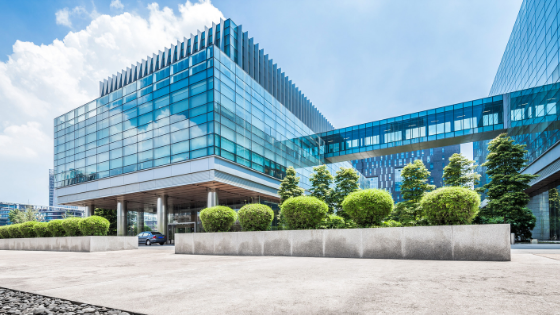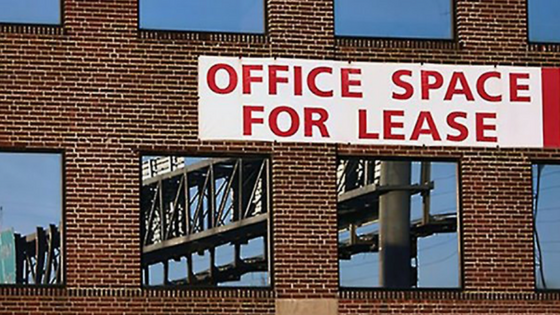Transitioning from a traditional office to a more dynamic, collaborative, open, and mobile office can be a significant culture shift for any organization. If done right, this transition not only changes your office but your life. In the contemporary workplace, it promotes more interaction and collaboration. The office becomes more flexible to accommodate the needs of different work styles. Outside the office, employees can work remotely, which improves work-life balance by eliminating commutes, providing more time for family and personal interests, and cutting the costs of business wardrobes, transportation, and meals.
The benefits to an organization include reduced real estate costs, improved employee productivity, and a more satisfied workforce. Proper space planning and change management can pave the way to changing your office and life.
Where We’ve Come From
The second half of the twentieth century witnessed a tremendous evolution in office design. After a century and a half of relatively static interior design, in the 1960s, office layouts began to shift from traditional enclosed-walled offices to the partitioned cubicle style design often lampooned in the Dilbert comic strip. But the changes continued.
Technological advances over the past two decades, particularly the personal computer, Internet, Wi-Fi, and smartphone, have taken office design concepts and contemporary work practices to previously unimaginable levels. We now have the opportunity to take advantage of the benefits of mobile and flexible workplaces, as well as amenities that once were available for workers only in their homes or as a part of their private, non-work life (e.g., kitchenettes, fitness facilities, daycare).
Two bizarre bedfellows have led the revolution in office concept design in the twenty-first century; the high-tech companies of Silicon Valley and the federal government through its program to reduce space. Both have significant impacts on office sector design as a whole. For example, Google is widely recognized and emulated as a leader in the field, while the federal government is the largest office space tenant in the country.
Where We’re Going
The acceleration of technological change parallels the rate of change in office design concepts and contemporary work practices. I have been fortunate to have become personally involved in this ever-evolving transition in office space from the inception of my consulting practice as a virtual company more than 25 years ago. As a result of this experience, I firmly believe that you can change your office and, thereby, your life.

How to Get There - Contemporary Work Environment
Every year, I increasingly work with organizations to reduce their space footprint and meet the needs of a changing workforce by transitioning from a traditional office environment with private offices and cubicles to a more dynamic work environment with a wide variety of individual workstations and collaborative areas.
Today’s workplace is designed to encourage creativity and collaboration, support new technology and mobile work arrangements, provide a healthier work-life balance, and offer the greatest return on investment for every square foot occupied. The transition to this contemporary work environment involves reorganizing spaces to be more functional and collaborative while providing the technology and change management guidance needed to support the new work environment successfully.
The transition can range from a comprehensive, programmatic approach to a one-time move, from a mixed plan of traditional and modern workspaces to an aggressively open and collaborative work setting. One thing is clear – the process must be tailored to each organization's unique mission, culture, and needs to succeed.
Here are the steps to successfully transition traditional office space to a more open and collaborative environment to support this objective.
Space Transition Steps
- Conduct Town Hall Meeting – conduct a meeting for everyone in an office (multiple meetings if the organization is large) and discuss the goals of the space transition process. Present success stories from other offices that have gone through the process and hear directly from management and other individuals who are supporters (change champions) of the space transition.
- Gather Data and Conduct Space Utilization Study – gather data on the number of personnel (by labor category, if applicable), current space by organizational component and type (office, storage, etc.), and rent (if applicable). In addition, perform a space utilization study to determine the usage of workstations and collaborative spaces and the workspace-sharing ratios that can be applied to a future project.
- Administer Survey – survey all managers and staff to determine primary employee work patterns, gauge perceptions, and cultural factors, and gather information on space and work requirements.
- Meet in Focus Groups – conduct focus groups to explore further issues identified from the survey results.
- Conduct interviews with internal subject matter experts to gather more detailed information on particular issues, such as special requirements, preferred space layouts, etc.
- Perform a Technology Assessment – determine the equipment, software, etc., that will best meet the needs of individual employees and the office.
- Prepare a Program of Requirements – prepare a program of requirements (detailed housing plan) for space and a list of technology needs that can be used to guide project execution.
- Develop a Business Case – develop a business case that justifies the project, including the benefits to employees and the organization, cost expenses, and savings.
- Formulate a Policy Development Strategy – assist the organization in revising existing policies and writing new approaches to address issues related to the unique workplace setting (e.g., use of technology, telecommuting practices, etc.).
- Conduct Training – develop a multi-faceted training curriculum that addresses all skills needed to be successful in the new workplace environment.
In the series of blogs and an upcoming e-book that will follow, I will flesh out each of these steps in greater detail.









.jpg)


.jpg)
.jpg)
-1.jpg)
.jpg)
.jpg)
.jpg)
.jpg)
.jpg)

